ISSN ONLINE(2319-8753)PRINT(2347-6710)
ISSN ONLINE(2319-8753)PRINT(2347-6710)
P.Das Mohapatra1, S.M.Mustakim2 and B.B.Kar3
|
| Related article at Pubmed, Scholar Google |
Visit for more related articles at International Journal of Innovative Research in Science, Engineering and Technology
In the present study an attempt has been made to understand the influence of fly ash on the growth of different plant species. In this regard a medium has been prepared using 1:1 soil: fly ash for conducting the study. The result obtained is compiled with different correlation methods. The plant species used in this study includes both aquatic and aromatic plants. During the study an attempt has been made to monitor the effect of fly ash on the growth of plants species in addition, study has been made to estimate the capacity of these plant species to absorb heavy metal.
Keywords |
| Fly ash, heavy metal, absorption, pulverization, aquatic plant, aromatic plant |
INTRODUCTION |
| Fly ash liberated from the power stations, presently only 25% being utilized for different industrial purposes as a potential raw material. It is mostly use in the cement and concrete industries. The left behind fly ash is generally dumped as a waste which is considered to be a major source for environmental pollution. Due to the variable sources of coal, fly ash extensively varies in its physical and chemical properties. Coal with a low calorific value and high ash content on burning liberates a huge amount of fly ash. When the fly ash is subjected to pulverization the concentration of different oxides of Fe, Ca, Na, Mg etc get upgraded ranging from 1 to 4% with the presence of some major essential elements and trace elements such as Cd, Cu, Ni and Zn etc get simultaneously upgraded. Specific elements such as Cu, Pb and Zn are found to be harmful to certain extent. Investigation has shown that elements like arsenic, boron, barium, cadmium and Mercury are having toxic effect when given in small doses to plant species. Fly ash with the specific characteristic of being very fine with an average diameter of <10mm, with medium bulk density, high surface area and very light texture. On an average Si, Al, Fe and Ca consists about 95 to 99% of fly ash with about 0.5 to 3.5% of Na, K, P and S with some trace and heavy metal. In the present study an attempt has been made to estimate the heavy metal absorption capacity of some of the plant species which have been developed on a mixture of sand and fly ash as the base. The study includes screening of different plant species (both aquatic and aromatic) for growth study and the heavy metal uptake by the plant species. |
II. MATERIALS AND METHODS |
| Two set of pot experiment were conducted for two types of plant species i.e. aromatic grasses and aquatic plant, growing in a fly ash medium. In the first set of experiment, four species of aromatic grasses i.e. Palmarosa, Jamarosa, Lemongrass and Citronella were planted in a pot filled with 2kg of fly ash and 2kg of late rite soil replicated 5 times each. In the second set of experiment 3 species of aquatic plant i.e. Eichhornia crassipes, Salvinia auriclata, Hydrilla sp., are taken with the same condition as per the aromatic plants replicated 7 times. Heavy metal uptake of different plant samples are studied in which the samples were harvested at 45 days, 60 days and 75 days in case of aromatic grasses and at 30 days, 45 days, 60 days and 70 days in case of aquatic plants. Harvested plants were dried in oven, chopped and processed to produce fine particles. |
| For heavy metal analysis, 1gm of plant sample was digested in tri acid mixture followed by required dilution. The different metal concentration in the filtrate has been measured using Atomic Absorption Spectroscopy (AAS). Further correlation has been carried out depending upon the total biomass and efficiency of different plants in net uptake of each metal. |
III. RESULT AND DISCUSSIONS |
| The study has been under taken to investigate the reactivity of fly ash and tendency of different plant species to uptake heavy metals present in different concentration in the fly ash sample. The study with reference to the aromatic plant revealed that heavy metal uptake for different plant species follows a different trend than the aquatic plant. |
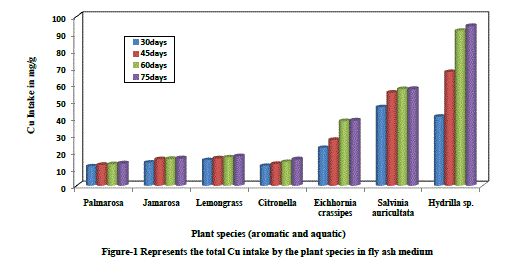 |
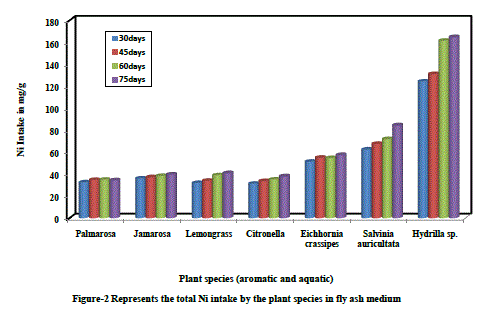 |
| The graphs show that taking into consideration the metal intake expect cadmium, in all other cases aromatic plants absorb less metal concentration than aquatic plants. This may be attributed to the fact that the capillary rise, absorption capability and porosity present in the aquatic plant might have made the plants more absorptive. |
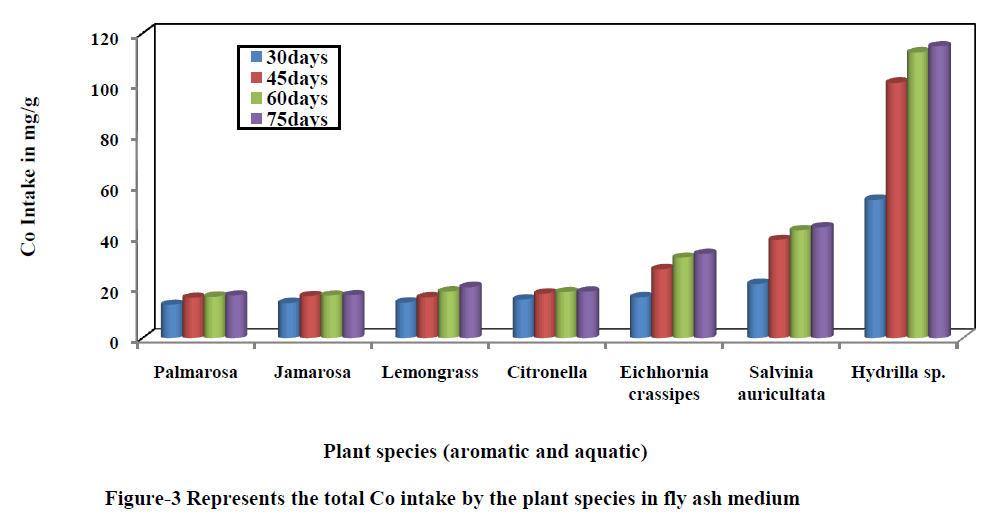 |
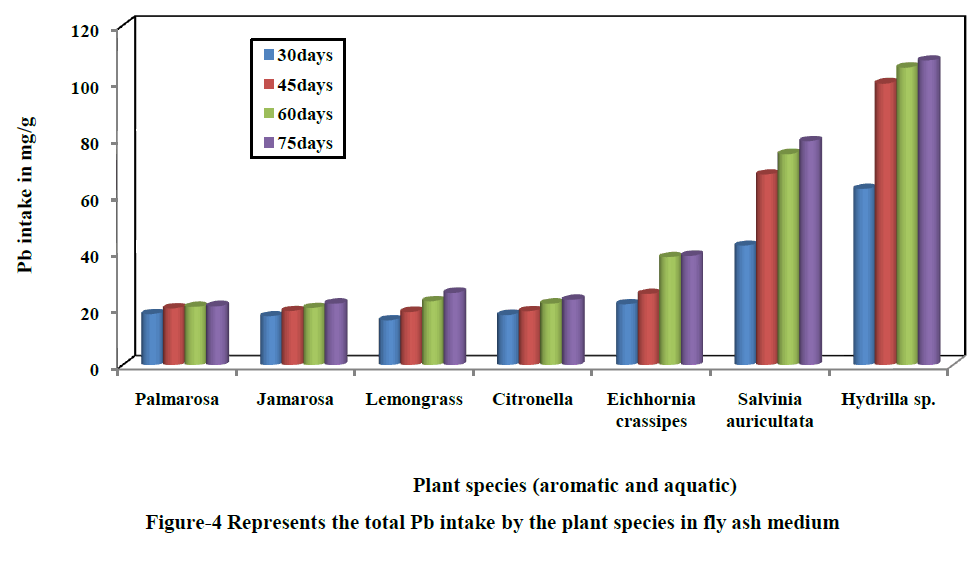 |
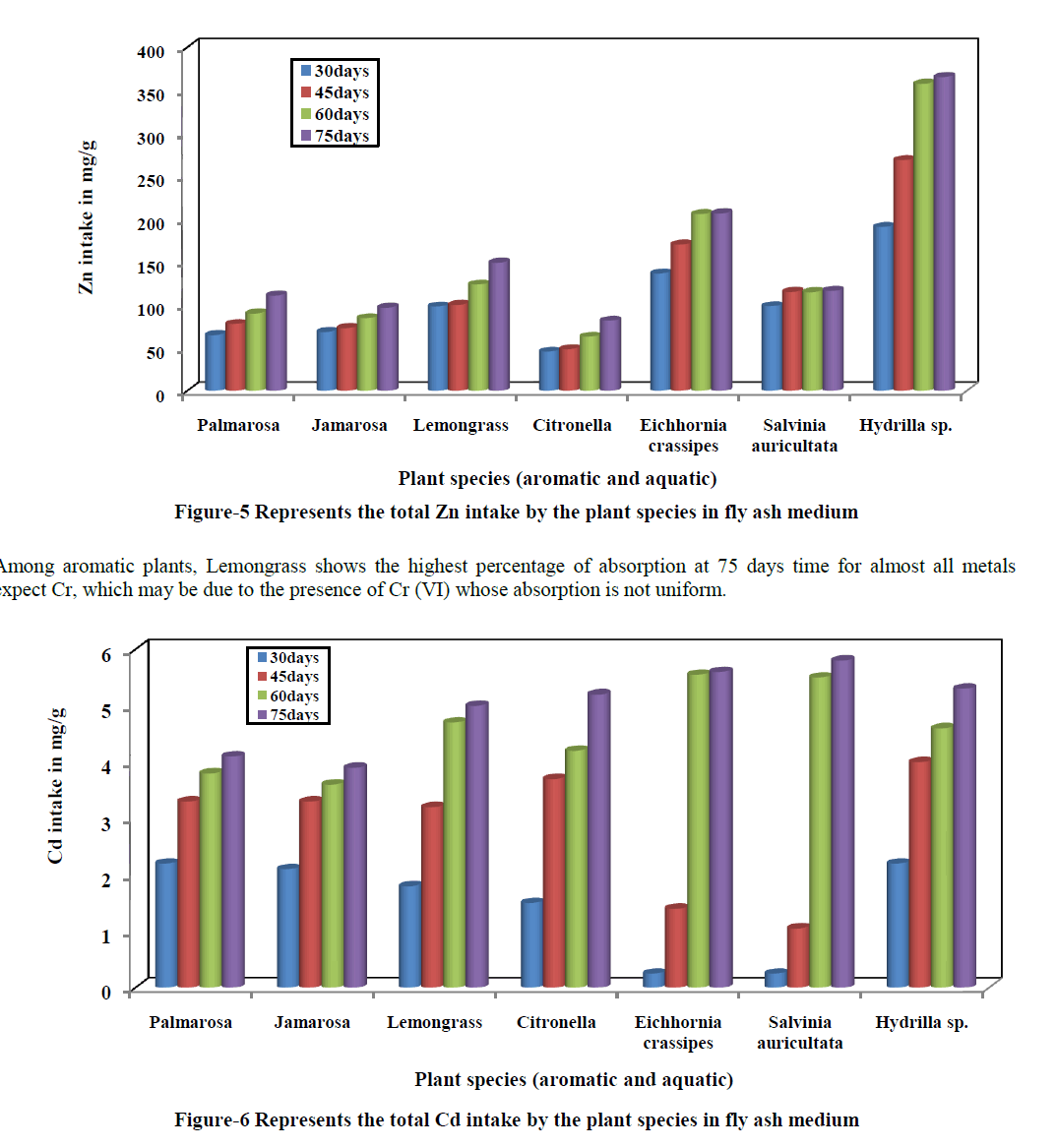 |
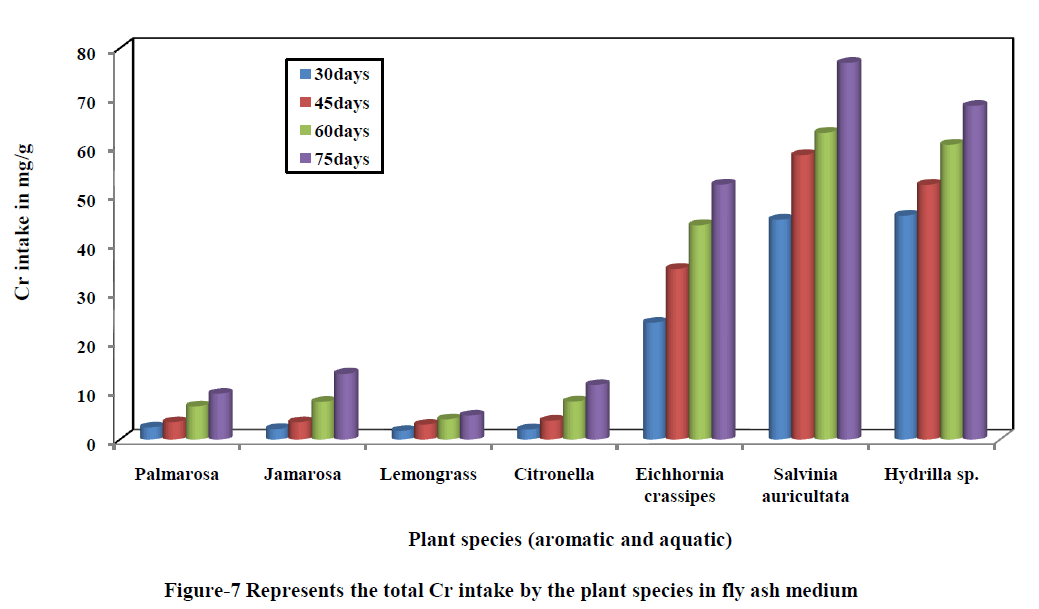 |
| Among the aquatic plants, Hydrilla sp. Shows the maximum metal intake expect Cr. Salvinia auriclata also shows appreciable absorption capacity expect for Zn and Co. |
IV. CONCLUSION |
| The experimental data revel that when soil and water get contaminated with fly ash, all the heavy metal become highly reactive and get easily absorb into the plant body. The entire study concludes that: |
| • Different metal absorption such as Cu, Ni, Co, Pb, Zn, Cd and Cr are represented in Figure-1, 2, 3, 4, 5, 6 and 7 respectively. |
| • Fly ash treated soil sample becomes enriched with the presence of different heavy metals which in due course makes the medium reactive. |
| • Different plants have a particular trend to absorb a specific metal. |
| • It has been observed that in comparison to the aquatic plant, the aromatic plants are more responsible for fly ash pollution. The data revel that contamination through fly ash becomes a vital source for heavy metal pollution with in due course enters into the body of animals and human beings to create different diseases and health hazards. |
| • Aquatic plants can serve as a better medium for heavy metal absorption as compared with aromatic plants. |
| • Different plants can be used as a medium to estimate absorb heavy metals to make the base material eco friendly. |
References |
|